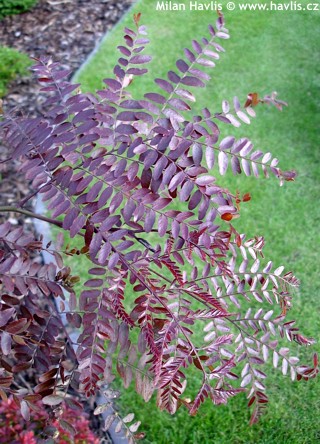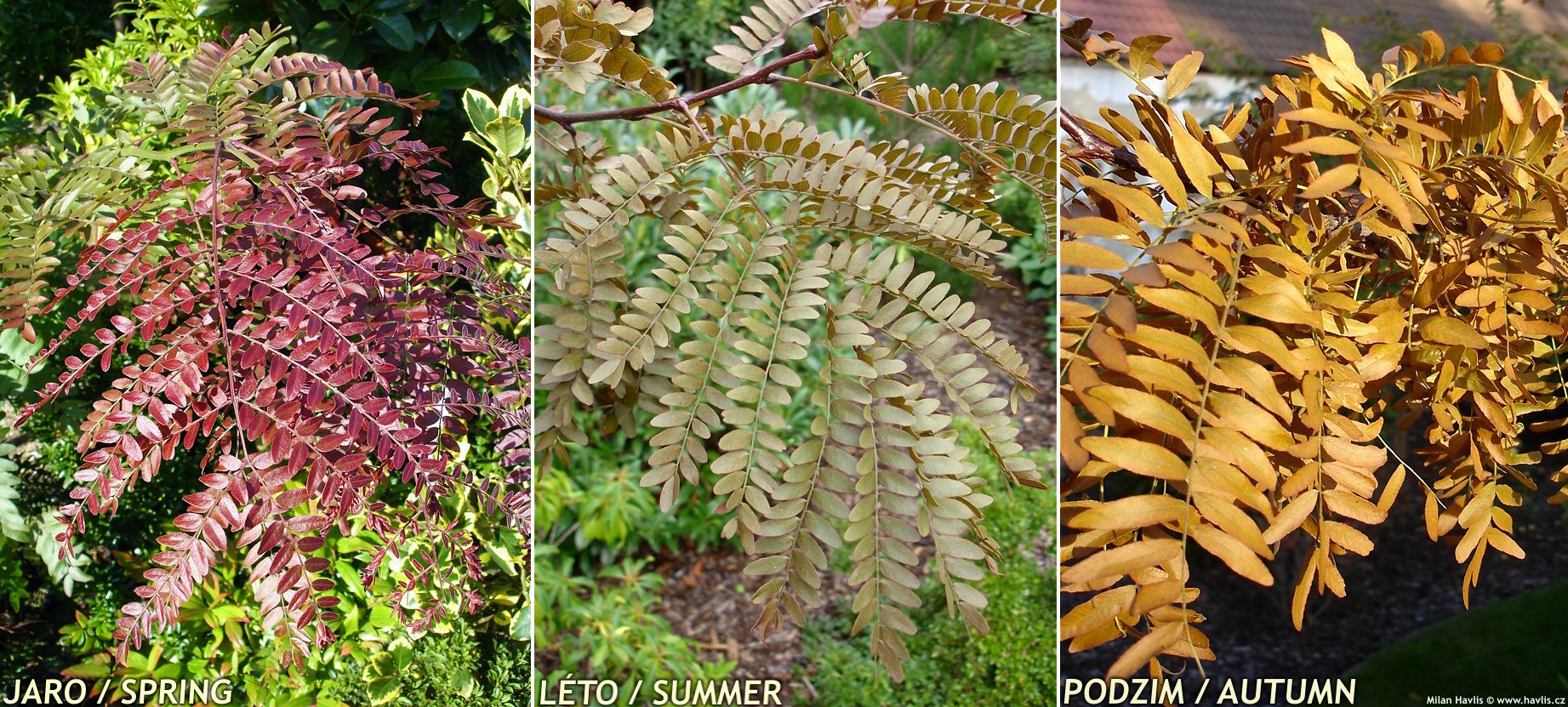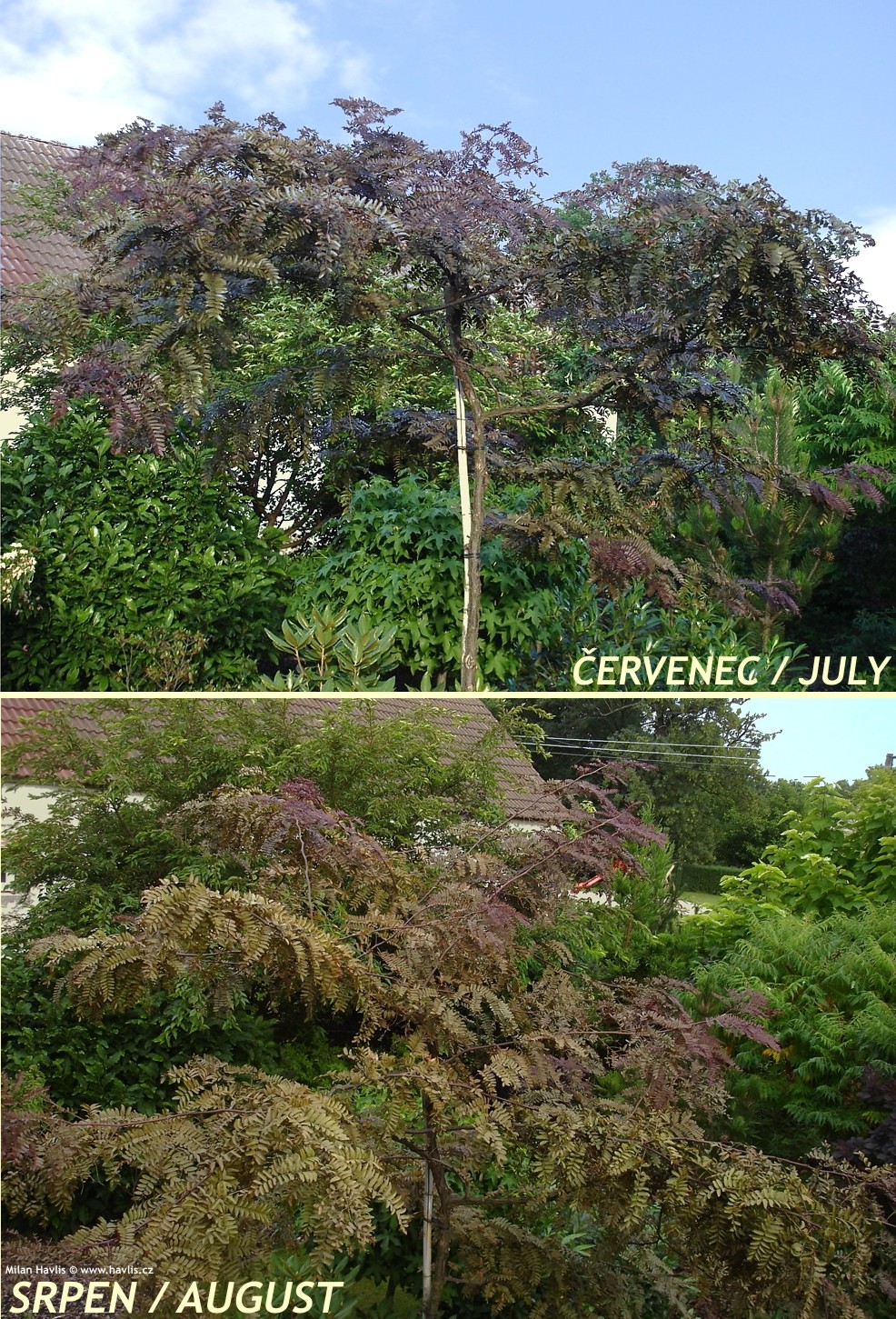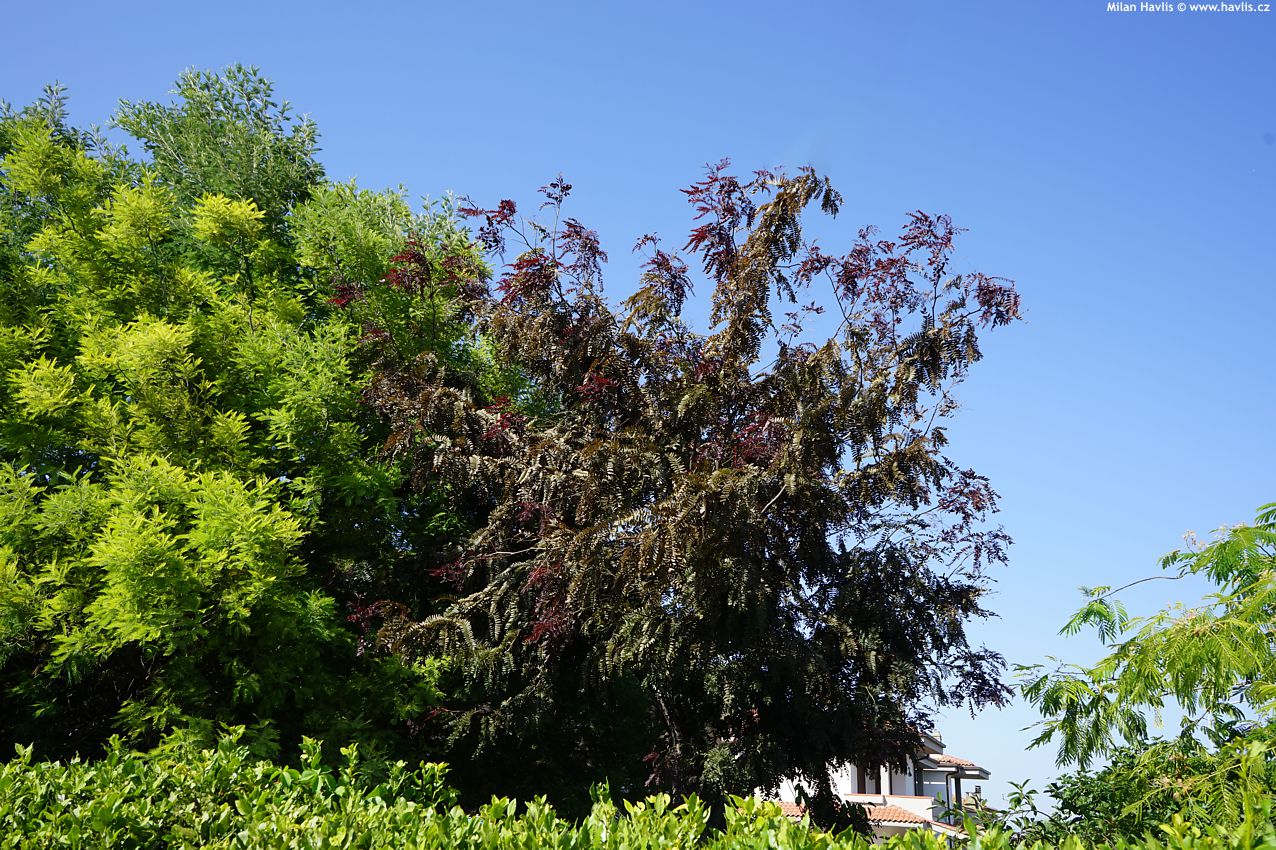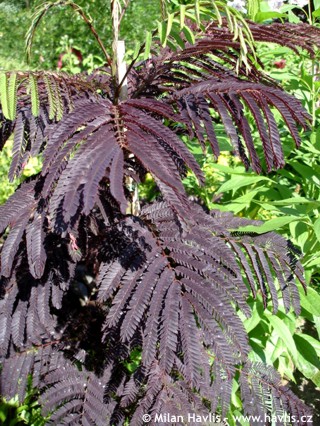Gleditsia triacanthos 'RUBYLACE' thornless honey locust
Some of you, gleditsia lovers, may have read about this quite rare and unique version of honey locust. Its charm consists in the unusual colour of leaves. They are bright purple as they emerge, turning chocolate brown later and light bronze in summer. They are pinnate or bi-pinnate and look like fern leaves.
The Latin name says three-thorned (does such word even exist?) but holds for its original wild species only. This variety is thorn-less, thank God. If you saw the thorns on the parent plant you would not even think of buying one. The branches are rather horizontal and growth rate is medium-fast, not as fast as for example its golden-leaved sister variety “Sunburst”. In my opinion, this plant looks best when grown as a standard tree with a canopy crown, clipped to umbrella shape: just cut off the vertical terminal and leave horizontal branches which will slightly droop with age. Clipping the tips at the end of winter will increase crown density.
For best results plant it in full sun. It is widely tolerant of soil types but will do best in humus-rich, moist but well drained soil. Fertilizing is not necessary, and if so, stop fertilizing in mid summer so that all branches can mature. Hardy to -29°C (USDA zone 5).
Last update 03-04-2010
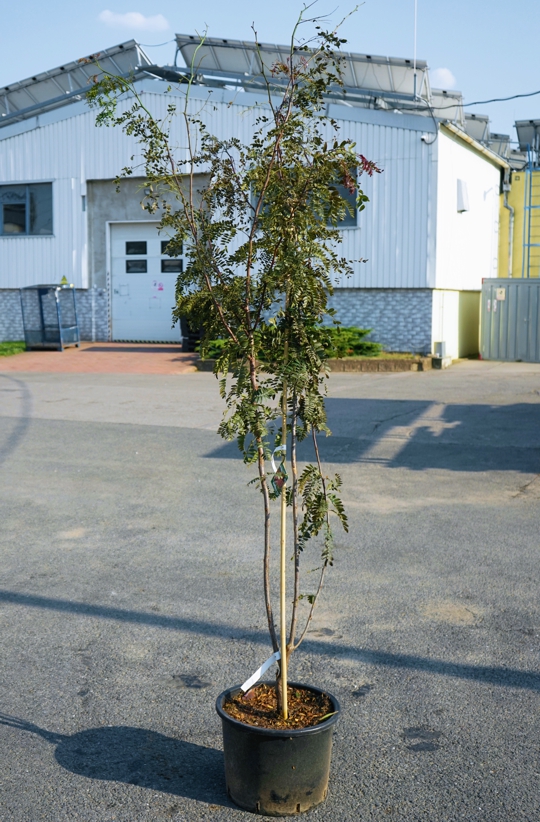
7 012,5 Kč

8 670 Kč
Goods are shipped all over Europe. For Russia and U.K. and for further details please read about SHIPPING OPTIONS HERE.
Are you interested in a serious discount for orders NOV-FEB? Check your options here.
THE PRICES INCLUDE VAT of 15%. For quick conversion you can use 1 CZK = approx. 0.04 EUR
- STANDARD QUALITY - Plants of this group are 1st class quality with number of branches and overall density adequate to their size and age, considering they were container grown.
- DE LUXE QUALITY - This label guarantees a luxurious quality of manually selected plants that, compared to their height and age, are exceptionally dense and beautiful.
- EXTRA - These plants are usually mature and bigger specimens with exceptional overall appearance.
- STANDARD (as described in the plant form) means a tree with a trunk of 190-210 cm and a crown at the top, unless specified differently. The commercial size for trees is their girth measured in the height of 1m from ground.
- HOBBY - These plants are of the same quality as our standard-quality plants but younger and therefore cheaper.
- SHRUB - a woody plant with branches growing bushy from the ground level.
- HALF-STANDARD or MINI-STANDARD - a small tree with shorter trunk, its size is usually specified.
- FEATHERED - These are trees with branches growing already from the base of the trunk and up along the stem.
- GRASSES and PERENNIALS - Sizes given usually read the diameter of the pot or the clump, as specified.

































